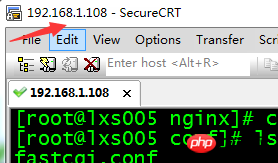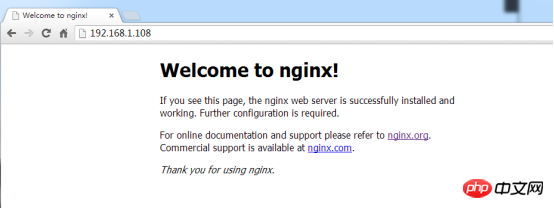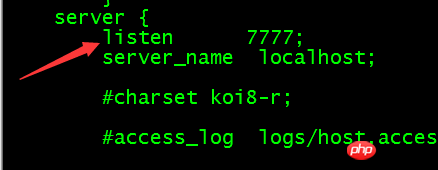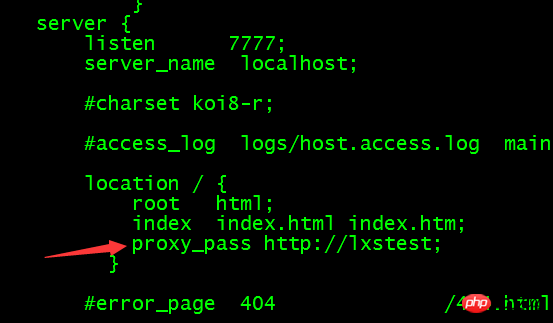 Operation and Maintenance
Operation and Maintenance
 Linux Operation and Maintenance
Linux Operation and Maintenance
 Introduction to TOMCAT cluster under NGINX reverse proxy
Introduction to TOMCAT cluster under NGINX reverse proxy
Introduction to TOMCAT cluster under NGINX reverse proxy
The following editor will bring you an article about TOMCAT cluster under NGINX reverse proxy in LINUX (detailed explanation). The editor thinks it’s pretty good, so I’ll share it with you now and give it as a reference. Let’s follow the editor and take a look.
Nginx has the characteristics of reverse proxy (note the difference with forward proxy) and load balancing.
This time Nginx is installed on the linux machine 192.168.1.108. To install Nginx, you must first install the openssl library, gcc, PCRE, zlib library, etc.
Tomcat is installed on two machines, 192.168.1.168 and 192.168.1.178. The client accesses the project content deployed by Tomcat in
192.168.1.168 and 192.168.1.178 by accessing the 192.168.1.108 reverse proxy.
1. Install Nginx under Linux (machine 192.168.1.108)
Install openssl library.
yum install -y openssl openssl-devel

Need to install gcc: yum install gcc-c++

Install PCRE yum install -y pcre pcre-devel

yum install -y zlib zlib-devel
 ##Download nginx: wget
##Download nginx: wget
13.0.tar.gzInstalled under /usr/local/
 Unzip tar -zxvf nginx-1.13.0.tar.gz
Unzip tar -zxvf nginx-1.13.0.tar.gz
 Enter the directory and run ./configure to generate make
Enter the directory and run ./configure to generate make
 At this time, there is an extra makefile in the directory
At this time, there is an extra makefile in the directory
 Compile make
Compile make
 Installation: make install
Installation: make install
After completion, there will be an additional nginx in the local directory
##Start nginx
View startup results

Close./nginx -s s top
top

configuration file after startup  Suitable for modifying the configuration file during startup
Suitable for modifying the configuration file during startup
 2. Install Tomcat under Linux (192.168.1.168 and 192.168.1.178 machines)
2. Install Tomcat under Linux (192.168.1.168 and 192.168.1.178 machines)
The installation process is very simple and I won’t go into details. Install Tomcat on the other two Linux machines (192.168.1.168 and 192.168.1.178), and deploy any project nginxTest. One content is 1111... and the other is 22222...
At this time, I am accessing a different IP address, and I have not yet configured Nginx as a reverse proxy server.
3. Nginx serves as a reverse proxy server
Mainly configure the contents of nginx.confa.
Configure servergroup, add upstream configuration between http{} nodes.
192.168.1.168:9090 and 192.168.1.178:9191 are Tomcat of the other two Linux machines (see 2 above) upstream lxstest{ server 192.168.1.168:9090; server 192.168.1.178:9191; } b. Modify the port number 80 that nginx listens to, and change it to 7777 (you can change it to any number or not). server { listen 7777; ...... } c. In location{}, use proxy_pass to configure the reverse proxy address; "http://" cannot be missing here, and the subsequent address must be consistent with the name defined by upstream in the first step. (The above is lxstest, so http://lxstest) location / { root html; index index.html index.htm; proxy_pass http://lxstest; } After the above modifications, start Nginx of 192.168.1.108 machine Last visit192.168.1.108:7777/nginxTest Different pages appear for the same address, indicating that the one visited is 192.168.1.168, and the one visited192.168 .1.178 nginxTest project. Detailed explanation of innodb_index_stats when importing data
Error prompting table primary key conflict What should I do if garbled characters appear when decompressing zip files under Linux? 





The above is the detailed content of Introduction to TOMCAT cluster under NGINX reverse proxy. For more information, please follow other related articles on the PHP Chinese website!

Hot AI Tools

Undresser.AI Undress
AI-powered app for creating realistic nude photos

AI Clothes Remover
Online AI tool for removing clothes from photos.

Undress AI Tool
Undress images for free

Clothoff.io
AI clothes remover

AI Hentai Generator
Generate AI Hentai for free.

Hot Article

Hot Tools

Notepad++7.3.1
Easy-to-use and free code editor

SublimeText3 Chinese version
Chinese version, very easy to use

Zend Studio 13.0.1
Powerful PHP integrated development environment

Dreamweaver CS6
Visual web development tools

SublimeText3 Mac version
God-level code editing software (SublimeText3)

Hot Topics
 How do I use regular expressions (regex) in Linux for pattern matching?
Mar 17, 2025 pm 05:25 PM
How do I use regular expressions (regex) in Linux for pattern matching?
Mar 17, 2025 pm 05:25 PM
The article explains how to use regular expressions (regex) in Linux for pattern matching, file searching, and text manipulation, detailing syntax, commands, and tools like grep, sed, and awk.
 How do I monitor system performance in Linux using tools like top, htop, and vmstat?
Mar 17, 2025 pm 05:28 PM
How do I monitor system performance in Linux using tools like top, htop, and vmstat?
Mar 17, 2025 pm 05:28 PM
The article discusses using top, htop, and vmstat for monitoring Linux system performance, detailing their unique features and customization options for effective system management.
 How do I implement two-factor authentication (2FA) for SSH in Linux?
Mar 17, 2025 pm 05:31 PM
How do I implement two-factor authentication (2FA) for SSH in Linux?
Mar 17, 2025 pm 05:31 PM
The article provides a guide on setting up two-factor authentication (2FA) for SSH on Linux using Google Authenticator, detailing installation, configuration, and troubleshooting steps. It highlights the security benefits of 2FA, such as enhanced sec
 How do I configure SELinux or AppArmor to enhance security in Linux?
Mar 12, 2025 pm 06:59 PM
How do I configure SELinux or AppArmor to enhance security in Linux?
Mar 12, 2025 pm 06:59 PM
This article compares SELinux and AppArmor, Linux kernel security modules providing mandatory access control. It details their configuration, highlighting the differences in approach (policy-based vs. profile-based) and potential performance impacts
 How do I back up and restore a Linux system?
Mar 12, 2025 pm 07:01 PM
How do I back up and restore a Linux system?
Mar 12, 2025 pm 07:01 PM
This article details Linux system backup and restoration methods. It compares full system image backups with incremental backups, discusses optimal backup strategies (regularity, multiple locations, versioning, testing, security, rotation), and da
 How do I use sudo to grant elevated privileges to users in Linux?
Mar 17, 2025 pm 05:32 PM
How do I use sudo to grant elevated privileges to users in Linux?
Mar 17, 2025 pm 05:32 PM
The article explains how to manage sudo privileges in Linux, including granting, revoking, and best practices for security. Key focus is on editing /etc/sudoers safely and limiting access.Character count: 159
 How do I manage software packages in Linux using package managers (apt, yum, dnf)?
Mar 17, 2025 pm 05:26 PM
How do I manage software packages in Linux using package managers (apt, yum, dnf)?
Mar 17, 2025 pm 05:26 PM
Article discusses managing software packages in Linux using apt, yum, and dnf, covering installation, updates, and removals. It compares their functionalities and suitability for different distributions.
 How do I set up a firewall in Linux using firewalld or iptables?
Mar 12, 2025 pm 06:58 PM
How do I set up a firewall in Linux using firewalld or iptables?
Mar 12, 2025 pm 06:58 PM
This article compares Linux firewall configuration using firewalld and iptables. Firewalld offers a user-friendly interface for managing zones and services, while iptables provides low-level control via command-line manipulation of the netfilter fra





